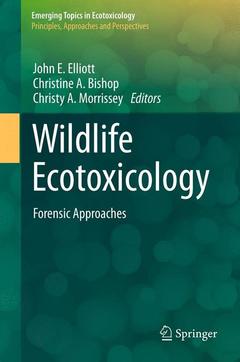Description
Wildlife Ecotoxicology, 2011
Forensic Approaches
Emerging Topics in Ecotoxicology Series, Vol. 3
Coordinators: Elliott John E., Bishop Christine A., Morrissey Christy
Language: English
Subjects for Wildlife Ecotoxicology:
Keywords
Publication date: 10-2013
468 p. · 15.5x23.5 cm · Paperback
Publication date: 08-2011
468 p. · 15.5x23.5 cm · Hardback
Description
/li>Contents
/li>Comment
/li>
Investigates the cause and effect relationships between environmental toxicants and vertebrate wildlife populations
Forensic toxicology is an important part of that field and focuses on identifying injury or death caused by poisoning
The implications of the choices made in environmental policy and regulatory decisions cannot be overstated
Includes supplementary material: sn.pub/extras
These books may interest you

Wildlife Issues in a Changing World 271.33 €



